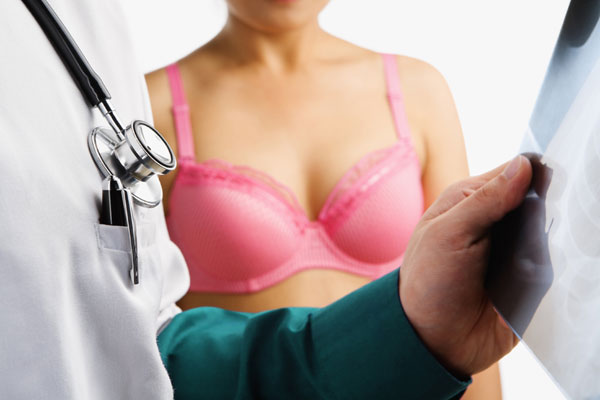6 Things Women Can Do to Lower Breast Cancer Risk

Some risks for breast cancer are unavoidable, such as a genetic predisposition to the disease. But there are several things women can do to reduce their breast cancer risk, a new report says.
These actions include avoiding unnecessary medical radiation, certain types of hormone replacement therapy and smoking; limiting alcohol consumption; maintaining a healthy weight; and exercising regularly.
The report, issued by the Institute of Medicine, was intended to assess the contribution of certain environmental factors to the development of breast cancer.
While the suggested actions could reduce breast cancer risk, just how much is unclear, the report said. The amount of benefit likely depends on the woman, and may turn out to be small at best.
But many of these behaviors, such as regular physical activity and quitting smoking, also improve health in general.
Environmental risks
An Institute of Medicine committee reviewed published studies on the topic, and weighed the findings by the strength of the study. Large population studies were considered to provide the strongest evidence of a link between a certain behavior or environmental factor and a reduced risk of breast cancer.
Sign up for the Live Science daily newsletter now
Get the world’s most fascinating discoveries delivered straight to your inbox.
Some factors showed consistent evidence of a link with breast cancer. One was ionizing radiation, which is used in medical imaging exams such as CT scans, dental X-rays and mammograms. Patients should follow their doctors' advice about how often they need these exams, the researchers said.
Another was use of hormone therapy that combines estrogen and progestin. Such therapy reduces symptoms of menopause, and patients should forego it only if they can, according to the report.
Weight gain was linked to an increased breast cancer risk mainly for postmenopausal women.
Some research suggests certain chemicals in gasoline fumes and vehicle exhaust increase the risk of breast cancer, but the evidence is not as persuasive, the committee said.
Use of hair dye and cellphones, on the other hand, is not likely to increase breast cancer risk, the committee said.
For other chemicals, there was not enough evidence to say either way whether the substances contribute to breast cancer, according to the report. These include bisphenol A (BPA), pesticides, ingredients in cosmetics and dietary supplements.
While drinking alcohol was found to be associated with an increased risk of breast cancer, small amounts are also thought to reduce the risk of heart disease, according to the report. Individual women should weigh the risks and benefits of alcohol consumption, the report recommended.
Future research
Much more work is needed to understand how our environment influences breast cancer risk over a woman's life. Most studies examining breast cancer risk factors have looked at women recently diagnosed with breast cancer.
"Breast cancer develops over many years, so we need better ways to study exposures throughout women's lives, including when they are very young," said committee chairwoman Irva Hertz-Picciotto, chief of the division of environmental and occupational health at the University of California, Davis, School of Medicine.
We also don't know when certain exposures may be most harmful, and if there is a particular time when preventative behaviors would provide the most benefit, Hertz-Picciotto said.
The report was funded by Susan G. Komen for the Cure, a nonprofit breast cancer organization that advocates breast cancer research and patient support.
Pass it on: There may be several steps women can take to reduce their risk of breast cancer.
This story was provided by MyHealthNewsDaily, a sister site to LiveScience. Follow MyHealthNewsDaily staff writer Rachael Rettner on Twitter @RachaelRettner. Find us on Facebook.

Rachael is a Live Science contributor, and was a former channel editor and senior writer for Live Science between 2010 and 2022. She has a master's degree in journalism from New York University's Science, Health and Environmental Reporting Program. She also holds a B.S. in molecular biology and an M.S. in biology from the University of California, San Diego. Her work has appeared in Scienceline, The Washington Post and Scientific American.









